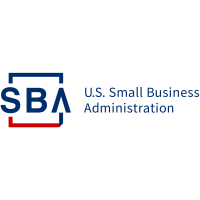Hurricane Season is Here.
SBA Encourages These Key Tips to be Prepared and Aware of Recovery Funding Programs
The Southeast region is home to millions of small businesses and thousands of miles of pristine coastlines. It is indeed a beautiful place to live and work, however we live in an area prone to hurricanes. Even our inland areas are often impacted by these storms through wind and flooding. Small businesses are the backbone for the American economy, and many are only one disaster away from closing their doors if not properly prepared. The U.S. Small Business Administration (SBA) helps business owners reduce the amount of risk associated with natural disasters in their homes and businesses.
Hurricane season began June 1st. We need to be mindful that the National Oceanic and Atmospheric Administration (NOAA) has predicted an above-normal forecast for the 2022 hurricane season. This includes a range of 14 to 21 named storms, of which six to ten will become hurricanes, including three to six major hurricanes. Businesses can and are affected by weather catastrophes; from short-term power outages to rebuilding their physical structures after a hurricane.
The first key question for storm preparation is to ask, am I document ready? Am I aware of what documents I need for insurance or recovery programs? Are my documents safe, either in a digital form I can reach online or printed and stored in a weatherproof location. Are my documents up to date? To be considered for an SBA disaster loan, business owners need several legal documents in place at a minimum including deeds, leases, insurance records, trusts, court orders, and tax returns. Keep these documents readily available and in a digital format whenever possible.
Additionally, ensure up to date contacts for the insurance company; employees; customers; and suppliers. Maintain up to date key information on inventory; machine/equipment; financial systems; and accounts receivable/payable. Having this information available can be the difference between getting funded in a matter of days versus months.
The SBA has programs to assist you with recovery after a natural disaster https://www.sba.gov/funding-programs/disaster-assistance. These include programs that provide financing to repair physical damage to businesses and residences, working capital for normal business expenses, mitigation assistance, and shortages due to the military deployment of staff.
Keeping a business operational is a key challenge after a hurricane. It is imperative in addition to gaining knowledge; all businesses have a plan in place for when disaster strikes. Businesses should be either preparing or updating their business emergency response plans. If you have not done so, please visit https://www.ready.gov as your starting point.
While we are using a hurricane as an example here, other disasters related to wind, flood, wildfire, earthquake, and hail damage are also covered by SBA disaster assistance. The Small Business Development Center Network, SCORE, Women’s Business Centers, and the Veterans Business Outreach Centers are local resource partners that often offer additional training and technical assistance related to disaster preparedness. Many district offices also host webinars or training sessions on the topic. Make sure to take advantage of these training opportunities whenever they are available.



